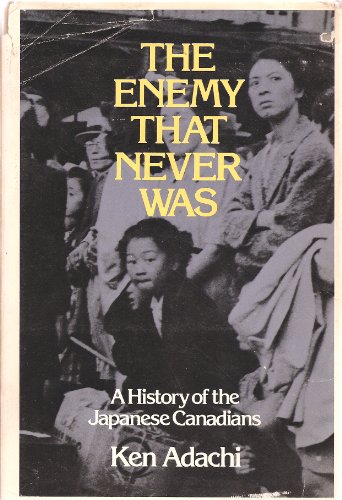
The Enemy that Never was
by Ken Adachi
"A History of the Japanese Canadians"
Popularity
1.79 / 5
* A book's popularity is determined by how it compares to all other books on this website.
Where to buy?
Buy from Amazon* If you buy this book through the link above, we may receive a small commission at no extra cost to you.
The Enemy that Never was by Ken Adachi
Details
War:
World War II
Perspective:
Civilian
True Story:
Yes
Biography:
No
Region:
North America
Page Count:
496
Published Date:
1976
ISBN13:
9780771007231
Description
Main Themes and Topics
Ken Adachi's The Enemy that Never Was delves into the poignant and sobering history of racism against Japanese Canadians spanning from 1877 to 1975. The book meticulously examines the themes of immigration, community organization, and the societal challenges faced by Japanese Canadians. Central to the narrative is the forced evacuation and relocation during World War II, reflecting the unjust treatment and systemic discrimination faced by this community. An essential element of the book is its exploration of redress, documenting the struggle for justice and recognition that culminated in the Canadian Government's formal apology and the Japanese Canadian Redress agreement of 1988.
Writing Style and Tone
Adachi's writing is characterized by its thorough and rigorous historical research. He employs a detailed and factual tone, ensuring that the magnitude of injustice and discrimination is conveyed clearly and effectively. The inclusion of personal accounts and community narratives enriches the historical dialogue, making the text not only informative but deeply affecting. His academic approach is balanced by an undercurrent of empathy and advocacy, highlighting both the resilience of Japanese Canadians and the moral imperative for redress.
Brief Summary (no spoilers)
The Enemy that Never Was provides a comprehensive examination of the lives and struggles of Japanese Canadians over nearly a century. Beginning with their immigration journey, the book charts the development of community life and the harsh prejudices encountered. A pivotal focus is the World War II era, where thousands faced internment and dispossession. Concluding with the community's relentless pursuit of justice post-1975, the book presents a narrative of endurance and eventual triumph with the redress movement leading to a formal apology from the Canadian Government in 1988.









